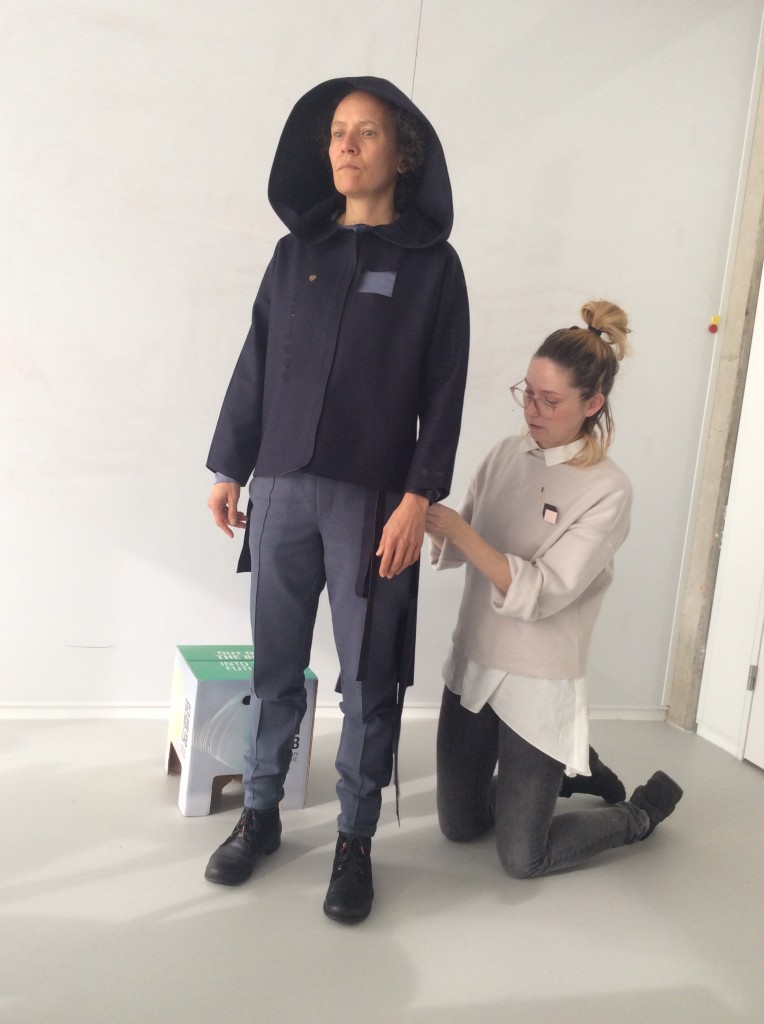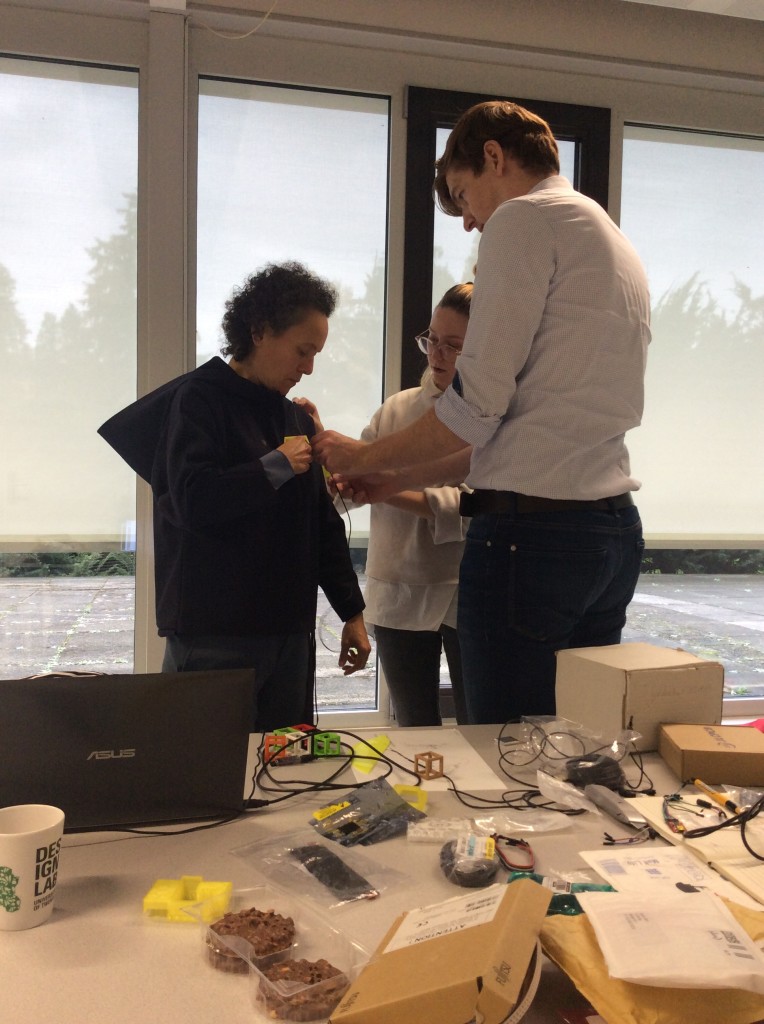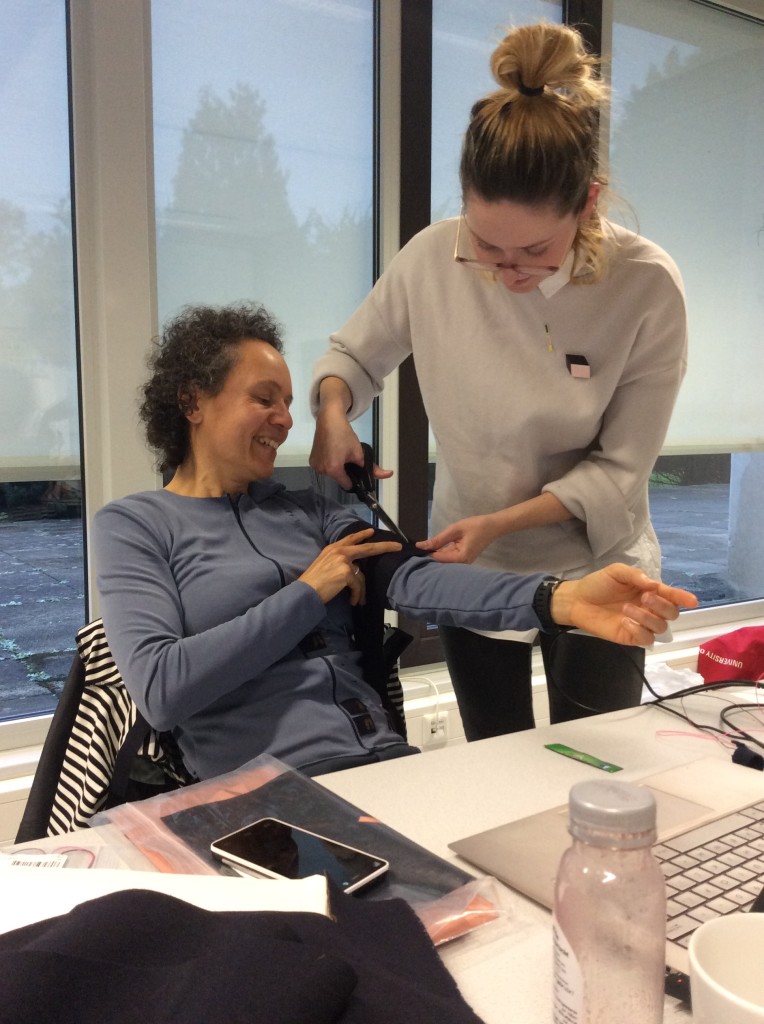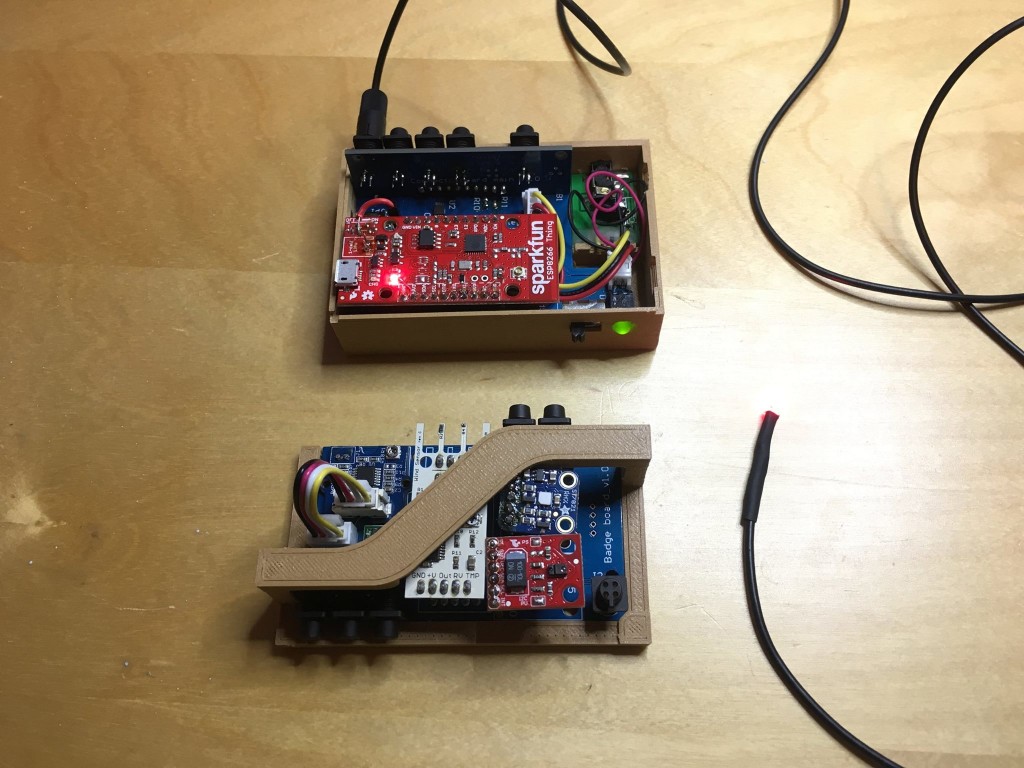Last weeks we had a great time working hard on the paper we wrote about the collaboration in a multidisciplinary team. All team members worked hard on the next prototype of the Silence Suit and we made great steps to realize it.

Collaboration Paper
But first, I want to tell you more about the paper we wrote. As a reaction to the call for papers from the Design Research Society, Danielle and me decided to reflect on the collaboration in this project. We decided that it goes very well and wanted to research if Danielle’s artistic vision of Hermitage 3.0 is stimulating the team member’s motivation in a positive way. We formulated a survey every team member answered to verify our hypothesis. These hypothesis were created by our reflection. While Danielle reflected on her own role and how she subjectively experience the collaboration, I took the role of an observer to reflect on it from a third angle as onlooker.
It was a really intensive time because it was very hard to formulate our hypothesis and our questions that clear, so we can compare it to the answers of the survey. First, it went very naturally. I did some research about the contemporary artist and compared it to Danielle’s art practice. Danielle read articles about the collaborations and how designers communicate within a collaboration. We saw some parallels with how our collaboration goes and talked about it. Later, it became more complex. We had some hypothesis and questions we still wanted to research. But what does our hypothesis mean in the bigger whole? While I found it easy to zoom in on the artistic practice, I found it more difficult to zoom out at the end to see the relations with the main question to formulate a conclusion.
It was noticeable that Danielle was the leader within this collaboration of writing the paper. I realized that she is experienced in reflecting and formulating her hypothesis in an academic way. Reflecting on how I worked on the paper, I noticed that the art school context is very different from the real world. Criteria for an artist as open minded and innovative seem obvious to me looking at my classmates. Danielle told me her experience with colleagues who finished art school but still work conservatively. I wonder if these people are artists in my eyes.
In the end I am really happy about the result of the paper. Even if there are some things we could further reflect on to get it more precisely, we made great discoveries. We concluded that there are objects needed to communicate with people from different disciplines. They are named boundary objects because they help the team members to cross boundaries. We also learned that the artistic vision of the project stimulates some team members to cross the boundaries of their own expertise. We believe that Danielle as person and as an artist stimulates also the dynamic of the project. But that is an aspect which is worthy of further research.
The writing of the paper was an extraordinary experience for me to work together on one text. I learned how difficult and important it is to understand each other thoughts in the way that you can think further on the thought of another. We have submitted the paper for review by the Design Research Society. We will know if it is accepted by the end of January. We’ll keep you posted.
Visit to Twente
Because we were so busy writing the paper I had no time yet to tell you about our last visit to Design Lab where three students from University Twente: Stephen, Klaas and Jelmer, are working hard to realize the electronics, 3D printed housing and the firmware for Silence Suit. Vera de Pont, the designer, went with us to look how the wiring and the sensors have to be included in the suit. The meeting itself seemed a bit chaotic to me because there was no main focus. Later, I realized that there cannot be a main focus because everyone is working on his own aspect from his own expertise. While Vera and Danielle tried on the suit, Stephen, Klaas and Jelmer worked on the PCBs and casing. And while Danielle spoke with Stephen, Klaas and Jelmer about technical details, Vera tried to effectuate the first adaptation. I noticed that Danielle took the cross over role between these two different work-fields, between design and technology she was the artist.

Generally, many things do not work from the beginning. So you have to make many trials before the result fulfils your expectations. That is something I really learned from my intern-ship and it is still something I have to work on. Personally, I want to do it right in one step. But obviously that is not possible with such a complex project. That is also why the meeting in Twente seemed that chaotic to me. In the end, I had the feeling that we did not reach our goals, because many things did not work. Now, some weeks later, I realize that these trials (I knowingly do not want to name it mistakes) were essential to come where we now are.

The first PCBs are ready, the badge for the environmental sensors and the box for the micro-controller are 3D printed and they look beautiful. The software and the suit itself will soon be ready. Then we have to bring together the suit with the wiring and the sensors. The next step will be to meditate as much as possible to get enough data to program the software intelligence which has to operate the light instrument. It is a exciting time because now, things really have come together.
